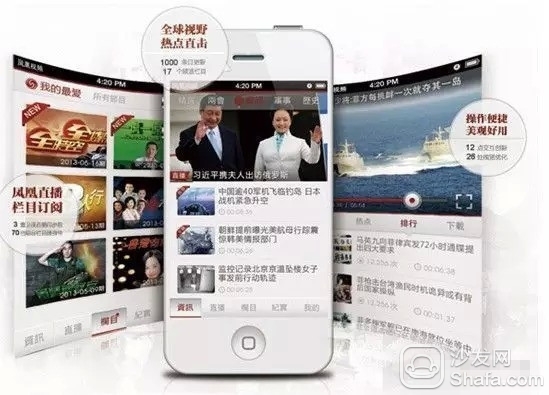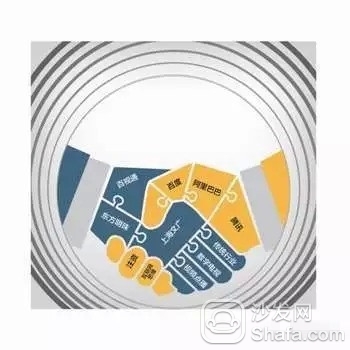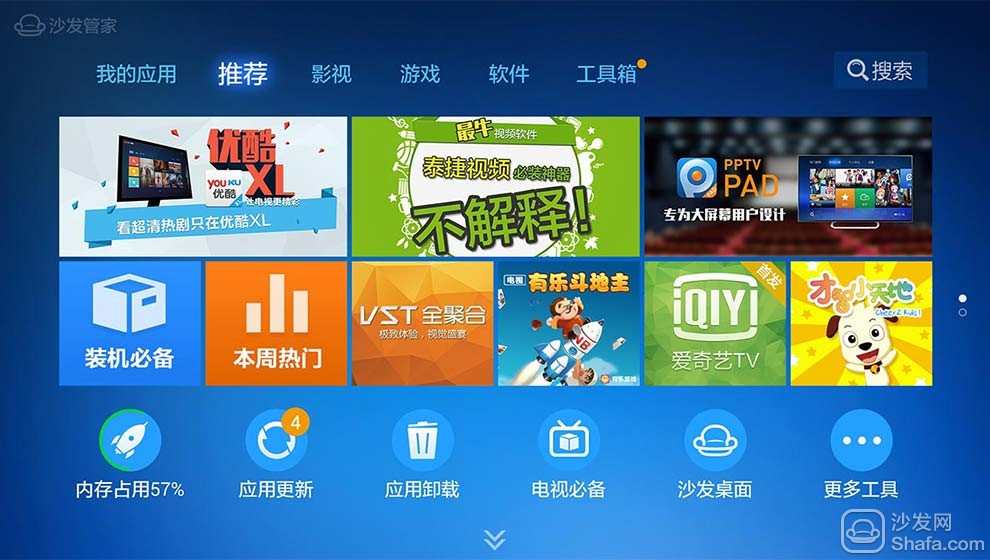Looking back at 2014 and looking forward to 2015, the broadcasting and TV industry is undergoing profound changes under the influence of the Internet. Port and Gruson mentioned in the book “Remolding the Medium†that “the newness of the new media comes from their special way of reshaping the old media. In order to respond to the challenges of the new media, the old media reinvented itself.â€
In fact, the Internet itself cannot be seen simply as a new type of media, but rather as a force for the reintegration of resources. This power has reconstructed the relationship between media and users, media and media, and the media and itself in the format of broadcasting and television.
The author starts with the three keywords of multi-screen, integration and transformation, and focuses on the revolutionary changes and rethinking of the restructuring of the radio and television formats in the past year.
Multi-screen: Reconstruction of Relationship between Media and Users
In 2014, China's mobile Internet users surpassed the PC for the first time, officially entering the era of mobile Internet.
According to the "Statistical Report on Internet Development in China" published by the China Internet Network Information Center, as of December 2014, the mobile Internet access of Chinese netizens reached 557 million, an increase of 56.72 million compared to 2013. The number of netizens who use mobile phones to access the Internet accounted for Compared to 85.8%, the percentage of desktops and laptops accessing the Internet is 70.8% and 43.2%, respectively.
Undoubtedly, the mobile phone becomes the largest Internet terminal. Users watch across screens instead of simply transferring media texts and images to another screen, but require that the media content and content playback be changed according to the characteristics of different screens and user behaviors.

As a result, the broadcasting and TV industry has emerged as a center for media aggregation and a user-driven trend. The contrast between the media and the user's collective power is mainly reflected in the following three aspects.
Content "IP" - Changes in the user's multi-screen viewing path. The diversity of users' multi-channel viewing channels dilutes the value of television communications and gives birth to new forces.
In 2014, the content "IP" really entered the public view and became the annual hot word for the content industry. Its appearance shows that in the era of mobile internet, the convergence power of media and users is showing a "funnel" effect, that is, the media content is diversified and the user's end is more centralized.
The so-called “IP-based†content, which is centered on the core IP of a hot resource, extends to the upstream and downstream of the industrial chain to form a new ecosystem that includes movies, TV programs, books, mobile games, e-commerce, and APP applications.
Hunan Satellite TV reality show “Where is Daddy?†is a successful example of converting program content into IP resources. In early 2014, the movie of the same name that was completed in less than a week was a great success. It helped Hunan Satellite TV gain more than 7 billion yuan at the box office.

In addition, the number of downloads of the same-name mobile game on the first day of the online game is more than one million. At present, the number of registered users has reached 100 million, and the number of daily active users exceeds 3 million. If the books of the same name are not on the shelves, 30,000 copies have already been sold. The success of Hunan Satellite TV also brought an IP boom.
Jiangsu Satellite TV's "Most Powerful Brain" "One Stop to the End", Dragon TV's "The Voice of China's Dream", and Shenzhen Satellite TV's "Speeding Forward" have also developed mobile games of the same name.
The broadcasting and TV industry through the IP system of the content system broke through the barriers between the original media and the cultural industry, formed a market diffusion effect, changed the contents into products, and changed viewers to users. This industrial strategy was gradually recognized by the entire market and continued to lead the broadcasting and television industry. Industry development direction in 2015.
Content "differentiate" - the change in the length of time users watch across the screen. With the advent of the 4G era, people are using mobile phones to photograph video and the emergence of micro-products such as WeChat and APP. Micro-content will lead the trend of information transmission in 2014.
According to the survey results of outsell research company, “44% of Google News users only browse news headlines without viewing the full textâ€. IResearch also shows that 82.4% of smartphone users watch short videos, which is higher than users who watch long videos. 8.2 percentage points.
This shows that the user's viewing behavior has a tendency to be mobile and fragmented, thus bringing about changes in the production of media content. In 2014, the broadcasting industry saw three directions in the application of micro content:
First, more and more television stations broadcast short-cut videos on new media terminals, especially for news and news programs with higher timeliness;
The second is to launch their own or use other people's short video mobile phone client and other products to collect the user's video works as the material of the program;
The third is to produce various types of short videos directly based on user needs.
In June 2014, with the hot wind of the World Cup, the Phoenix video client was redesigned and added a “hands-on†feature to make it easier for users to obtain the latest Phoenix video content. It also helps users to share what is happening around the world anytime, anywhere. news.

Phoenix Video, which has both a news video platform and short video applications, may usher in rapid development in the field of short news video. In addition to its own development, the broadcasting and TV industry has also started cooperation with a short video social platform.
In December 2014, CCTV-6 launched a TV reality show, Cinderella, who selected reality TV show actresses from short videos tagged with “Cinderella†uploaded by a large number of “grassroots†users. This not only greatly reduces the production and labor costs of the television station, but also increases and enriches the content of the platform itself.
On the video site, never expected that the popularity of such micro-movies, and other micro-content, micro-information high-speed flow, cross-platform integration, it is to meet the viewing needs of users in the mobile Internet era.
Therefore, the broadcasting and TV industry should make more use of the “micro†word to produce more accurate, short, lively and attractive content, and make use of Weibo, WeChat and other communication platforms to form a reporting mechanism for instant collection and instant delivery. . Because short video has the characteristics of low barriers to entry and diverse types, it is bound to usher in a new round of rapid development in 2015.
The content "automagination" - the user's multi-screen viewing changes. The era of mobile internet deconstructs the era of mass consumption, and social groups appear to be re-dispersed and converged.
In other words, the era of mass consumption of “thousand people and one side†is declining, and the “since the era†of highly subdivided ethnic and small-scale consumption is approaching.
The 2014 TV and media consumption trends report released by Ericsson Consumer Research Office shows that watching TV is gradually changing from family activities to personalized entertainment activities, and users have entered a new era of on-demand entertainment. It is predicted that by 2020, 50% of TV users will choose to watch on-demand content, and another 50% will choose live TV content.
This trend is even more apparent in the Internet field. They use the massive data analysis of users on their own platform to make personalized recommendations. Baidu's new "One Person One World", Sohu News client "thousands of people", Koala FM "listen to me different" is a specific case of application.
HD set-top boxes not only provide rich TV programs for families, but also extend from popular preferences to narrow-minded personal choices.
In August 2014, Mango TV held a business seminar in Shenzhen and conducted discussions with industry players on the current situation and future development of the OTT box industry. The OTT set-top box manufacturers proposed to provide differentiated development from the user's different needs based on the provision of video services to users.

Such as the use of "video + X" model to develop business in "video + games" "video + karaoke" "video + shopping" "video + smart home."
As the transmission channel of radio and television content, Gehua Cable's own data resources have long been underestimated. In December 2014, Gehua Cable announced that the nation’s first real-time collection and analysis system for viewing data has been completed. It not only has live data, but also counts the viewing status of the viewing services and on-demand services.
Based on this comprehensive data statistics, the system can provide personalized viewing guides for high-definition interactive digital set-top boxes. For example, when viewers broadcast a film and television drama, the system will automatically promote other content that the audience may like.
Transformation: Reconstruction of the Relationship between the Media and Itself
The production of the program turned to originality. In 2014, various types of variety show markets emerged in an endless stream. Variety shows have a high rate of return on investment and have become a more active type of program in the broadcasting and TV industry. People joked that there is a specification called “phenomena level,†and there is a kind of “fire†that is called by friends around you.
From January 1, 2014, the “Notice on Doing Well the 2014 TV Stars Integrated Channel Program Arrangement and Filing Work†issued by the State Administration of Press, Publication, Radio, Film and Television was formally implemented. The "Notice" requires that no more than one newly introduced overseas copyright model program be aired and must not be scheduled for broadcast between 19:30-22:00.
The "Notice" aims to adjust the types of programs, enrich the layout, control the total amount of models introduced, and encourage originality. People have also gradually discovered that foreign successful models are not universal artifacts, it is easy to cause similar programs, it is difficult to create their own TV features.
The production of programming gradually returns to rationality through utilitarianism, and the program model has also evolved from imitation to originality. Throughout 2014, David saw an increase in the proportion of original programs, which accounted for about 80% of the total. For example, CCTV’s “Colorful Chineseâ€, Zhejiang Satellite TV’s “12 Taste†and Jiangsu TV’s “Most Powerful Brain†were acquired. The double harvest of word of mouth and viewing has become a key program in 2014.

In addition, David has taken measures to encourage originality. There are three means.
First, set up specialized agencies and departments, such as Zhejiang Satellite TV and Shenzhen Satellite TV respectively set up a strategic development center model R&D department and an innovative program R&D department, which is conducive to establishing a normal production mechanism for new programs.
The second is to set up a special innovation fund for financial support, such as Shanghai Radio and Television set up hundreds of million yuan of original program R&D promotion funds.
The third kind is to open the door, face Taiwan, or even solicit. Hunan Satellite TV and Jiangsu Satellite TV form the normal mechanism for collecting program R&D programs from Taiwan twice a year. Shenzhen Satellite TV launched the “One Million Collection Creative†campaign in January 2014. CCTV and Dragon TV have similar initiatives. These methods provide a source for radio and television program production and are worth learning from.
The positioning of TV drama turned to self-control. According to data from the State Administration of Press, Publication, Radio, Film and Television, in 2014, the total production of television dramas in China exceeded 15,000 episodes. China has become the largest producer of television dramas.
Metropolitan dramas continued to be well-received in 2014, reaching a total of 107, an increase of 22% over 2013. However, the cost of TV dramas has increased year by year. In 2012, the production cost of “Fast Maomao Biography†was 1 million. By 2013, the “Divorce Lawyer†had an integrated cost of 1.5 million yuan. In January of this year, the “Wu Mei Niang Saga†hit 3 million. A set.

Due to factors such as the actor's pay, shooting costs and other factors, the production cost of TV dramas remains high, which will need to be changed after the implementation of the “One Play Two Stars†policy in 2015.
For two-third-line TV, this change in policy has increased the average cost of purchases, and self-made dramas have become a breakthrough. Traditional TV drama production agencies saw the potential of the market. In addition to cooperating with TV stations, they also formed strategic alliances with video sites. In 2014, the industry was known as the “Internet self-made drama†in the first year.
According to the data provided by Art En Consulting, as many as 54 online self-produced dramas were online as of mid-December 2014, including “Soul Ferryâ€, “Unforgettableâ€, and “The Year in a Scrutinyâ€. The influence is almost equal to the drama.

Platform profit turned to diversity. According to the survey data of CTR Media Intelligence, in 2014, the amount of TV advertising was basically the same as last year, up 0.398% year-on-year, and the slowdown in advertising growth was also a fact.
In order to continue rapid development, it requires a lot of financial support. Therefore, diversification is imperative.
According to the "2014 Radio and TV Blue Book" released by the Development Research Center of the State Press, Publication, Radio, Film and Television, the revenue structure of radio and television has become increasingly reasonable from the perspective of the development trend in the past five years. The proportion of advertising revenue to total revenue has decreased from nearly half in 2009 to Less than 40% of the total revenue of the cable network also dropped by about 6 percentage points, while other revenues rose by about 18%.
In 2014, various innovative initiatives continued to provide television with added value.
The first is the "program + e-commerce" model. Six performers of the “Goddess of the New Clothes†show each stage of the show, presenting design ideas around a theme. The program integrates the resources of Tmall, Dragon TV, and production companies, effectively opening up the channels of television and electric business groups.

According to Tmall's statistics, the online and offline interactions of the programs exceeded 100 million person-times, and the sales of garments exceeded 100,000.
The second is the program copyright mode. On the afternoon of March 11th, 2014, Shanghai Oriental Media Group Co., Ltd. (SMG) and the United States Creative Media Group (CMG) signed a strategic cooperation framework agreement, which added more than 16 million copyrighted products to the second-degree pigeons copyright repository.
Second Pigeon Network is a copyright trading platform jointly established by SMG's copyright-issued Shanghai Five Shore Communication Co., Ltd. and an external technology company. It has the largest warehouse of short video products with clear copyright and available for trading in China.
The third is the single broadcast strategy of Mango TV, which brings the added value of the new media platform. Mango TV not only takes copyright from Hunan TV station in one direction, but also participates in the production of all programs in Taiwan, including the Golden Eagle Festival, and the integration of the advantages of content resources and human resources with TV stations.
At the same time, some "TV not broadcast" versions and purely network-made programs were broadcast on the website. Other broadcasting and TV industries are also striving to "cross-border" operations to achieve cooperation between brand resources and advertising resources and derivative business.
More involved are e-commerce, online games, artist brokerage, and film and television industry bases, such as digital TV and TV shopping under the Shanghai Media Group and Hunan TV Media, and their non-advertising revenues can be used to feed TV.
Fusion: Reconstruction of Relationship between Media and Media
On August 18, 2014, the Central Government deepened the Guiding Opinions on Promoting the Convergence and Development of Traditional Media and New Media, which was reviewed and adopted by the Fourth Meeting of the Leading Group of Reform, and pushed the development of integration to a new height.
2014 is the "Great Capital Year" of Chinese media. According to statistics, during the first three quarters of 2014, there were 63 mergers and acquisitions involving culture and entertainment industries, with a total capital of 55 billion yuan.
The rapid development of the domestic film and television industry, driven by the capital market from the system to the market, from the content to the channel, from single to multiple, the integration between the media will move in the direction of "centralization."

Integrate internal resources and create "grouped aircraft carrier" in depth. The integration of internal resources to create aircraft carrier-level media groups is a new trend in the future. From a national perspective, in May 2014, China Radio and TV Network Co., Ltd. was established and listed, marking the start of China's TV cable reorganization and network integration, which is a landmark.
In order to ensure the marketization of integration, at the beginning of May 2014, the Ministry of Finance and the State Administration of Press, Publication, Radio, Film and Television jointly issued the “Constitution of China Radio and TV Network Co., Ltd.†to China Radio and Television Network Co., Ltd.’s management system, major tasks, and corporate governance. Structures and other matters are clearly defined and laid the foundation for market-oriented operations.
China Radio and TV Network Co., Ltd. has a registered capital of 4.5 billion and a loan credit of 400 billion yuan. It will have various telecom network and Internet business qualifications and related licenses, as well as the national cable television integrated broadcast control platform and new media integration broadcast control platform business qualifications. Including the three major subsidiaries of China Cable Network Corporation, State Grid Wireless Corporation, and State Grid Satellite Corporation.
From a local perspective, the major asset restructuring of Shanghai Culture, Radio, Film and Television Group (SMG) is also a major event in the radio and television industry in 2014. On November 21, 2014, the two major listed companies of the SMG Group, BesTV and Oriental Pearl, restructured their assets through mergers and acquisitions. At the end of the year, they injected the new company with Oriental Shopping, Shangshi Film, and five of its subsidiaries. Shore propagation and Wenguang interactive quality assets.

The new market players will have nearly 100 billion total assets and will become a platform for SMG's overall listing and new media transformation. After the reorganization, Shanghai Media Group (SMG) will achieve overall listing and the market value will exceed 100 billion yuan.
Integrate external capital and expand the industrial layout horizontally. The relationship between the media and the media is a reflection of the changes in the media's competitive landscape.
On the one hand, the broadcasting and television industry is facing the impact of the Internet and is actively deploying new media. It hopes to gain financial support from the hands of market forces and tap new business models.
For example, on November 25, 2014, SMG reached an agreement with Alibaba to rely on the platform of “First Financial†to expand its financial data services. Xiaomi Technology Corporation also dug away Chen Yu, editor-in-chief of the portal, to develop a mobile content chain.

On the other hand, social capital sees the CPG industry accumulating years of content and value platforms to prepare for the related layout of the industry chain.
In terms of network cooperation, we have also shifted from simple docking at the broadcast level to deep integration at the capital level. This integration not only promotes the circulation of funds, but also brings in many intangible resources for both parties.
For example, after being invested by BesTV, Fengxing.com has also obtained the exclusive copyright of Dragon TV's 2014 variety show. After obtaining Suning investment, PPTV obtained the exclusive copyright of Jiangsu Satellite TV's multi-file variety show due to its good cooperation with Jiangsu TV.
Recommended installation sofa butler, download address: http://app.shafa.com/

Hot Apps Recommended: HDP VST All-in-one Fast-viewing film Dragons Live Karaoke King TV Thumb Playing ZAKER